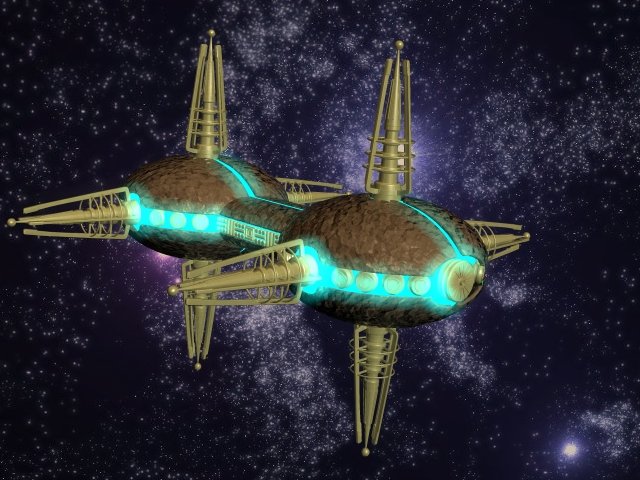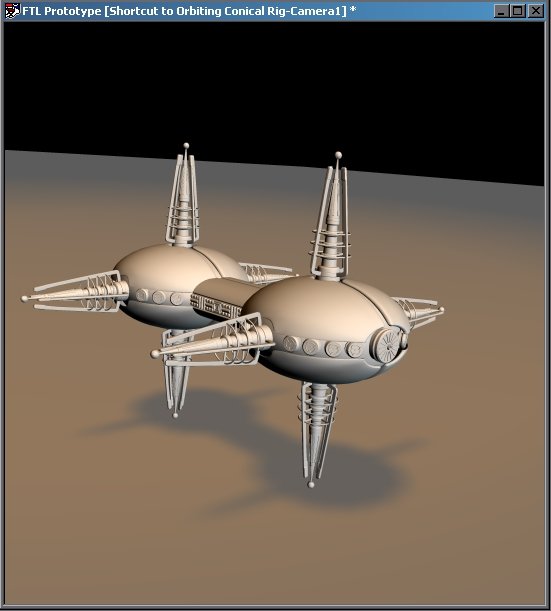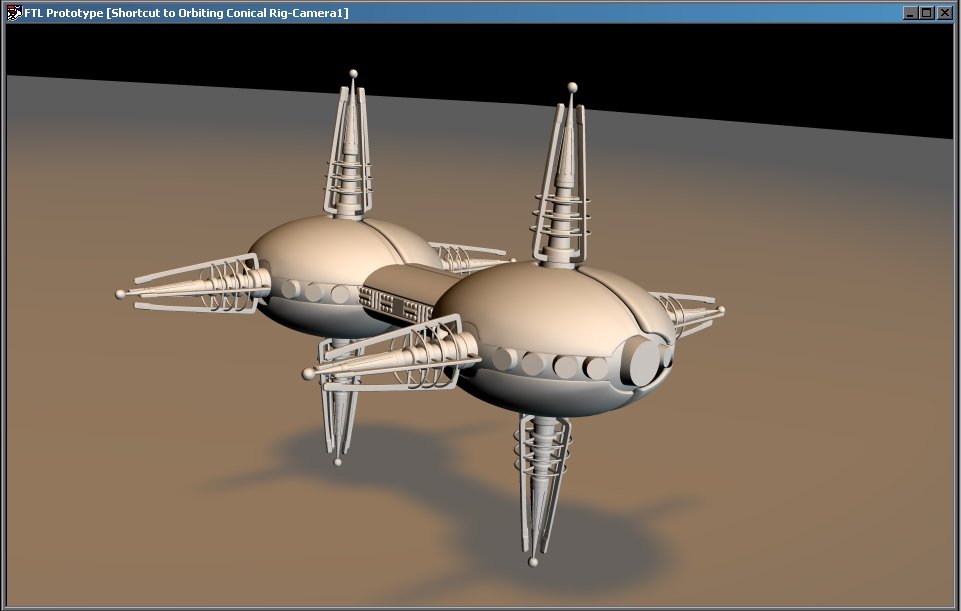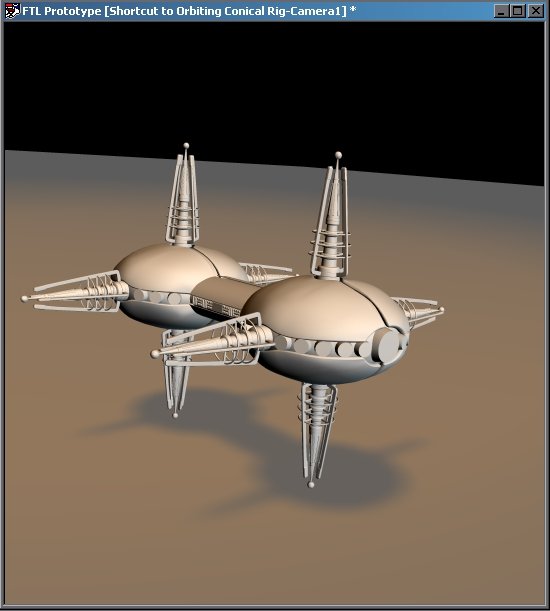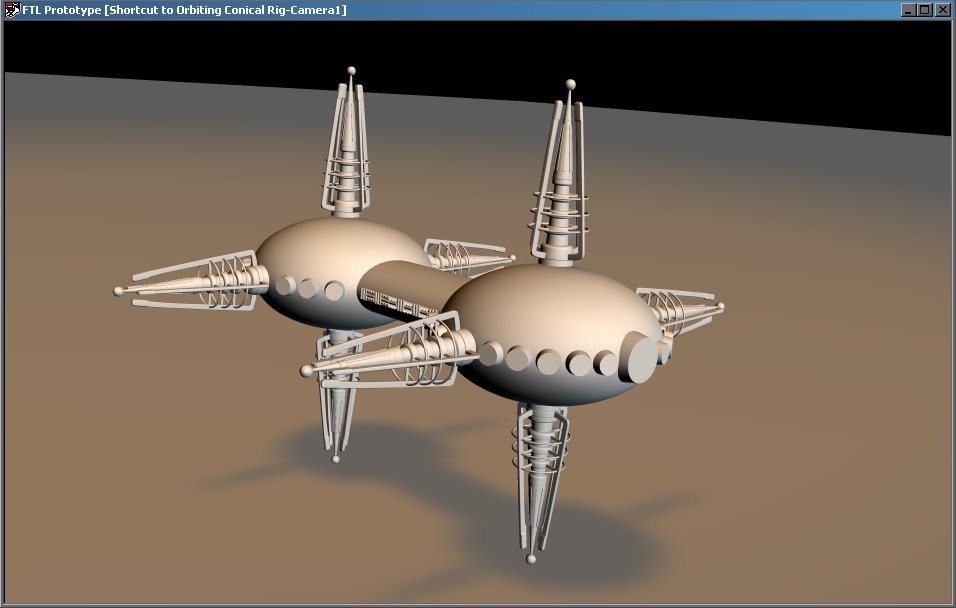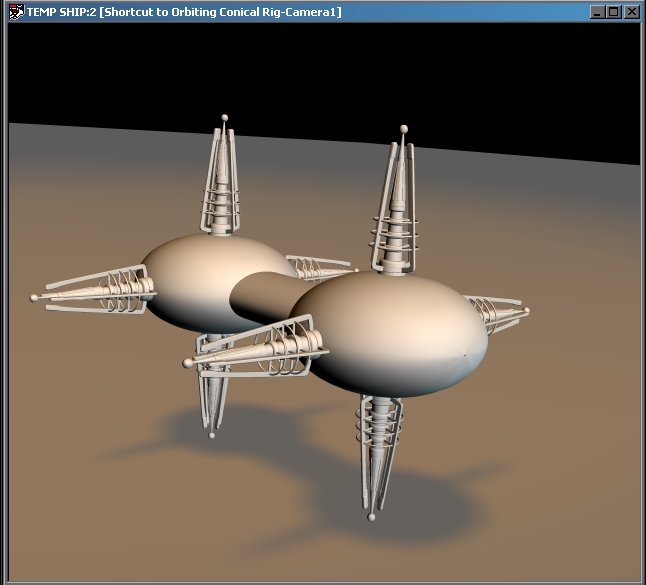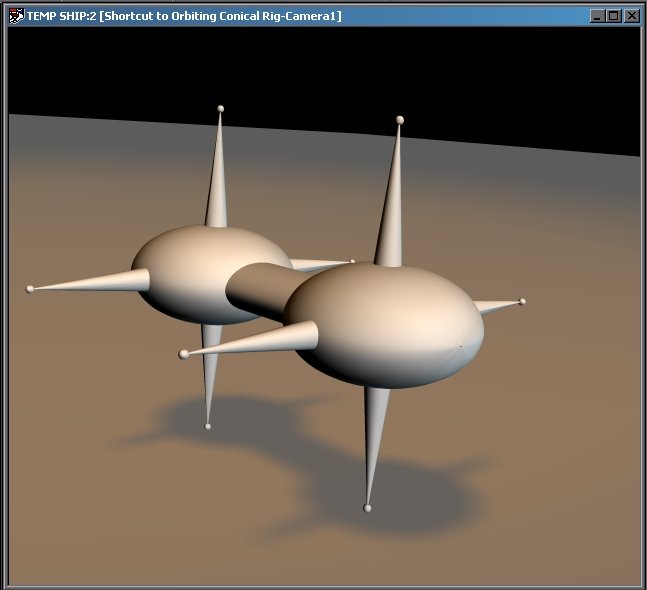
nyahkitty
*A:M User*-
Posts
524 -
Joined
-
Last visited
Content Type
Profiles
Forums
Events
Everything posted by nyahkitty
-
LOL! That was fantastic! Thanks. That little short should serve to inspire me to great deeds. Now on the second pass for Keekat. Updates soon. P.S. I noticed the block character flexed his fingers like I planned for Keekat in this shot. For me, it's to add life to Keekat. I wonder if this is a common technique.
-
This scene is turning out great. The seats have the feel of realistic color. I wondering if the thing that will make the table fit into the scene is right now it doesn't seem to be casting shadows on the floor, so it appears to be floating. Maybe make some adjustments with those things and see what happens. Oh, be sure to save out a seperate version of your files in an archive before you do that.
-
Hello, I'm testing the 2001 rig of Keekat to see if it will animate well. The attached video is the first pass of keyframes. I blocked out the main poses every 5 to 15 frames at 30 fps. The poses are then locked down by setting keyframes for all active channels on that particular frame. I'll clean it up later, right now I want to be certain of the action itself, not the timing (which will be fixed later) Thus the tail only whips around once, instead of being really alive yet. Lip sync comes last and I plan to do that manually, especially since it's just noises and no words. Of course the sounds are straight off of the A:M CD. There was no cough sound effect, so a door slam must suffice. Where finer detailed animation is needed to establish the scene at this stage of development, I will actually use the pose sliders or clean up the keyframes for the feet so they don't drift. But only if it feels necessary. Feet walking and animation are more challenging for me since I don't animate that as often, so I figured out how to make Keekat shuffle his feet by acting out the scene myself and paying special attention to what my feet were doing. Very informative. I didn't realize the process of pivoting involved in shifting my weight. That's neat! KeeKat_Voice_Test_02.mov
-
Yes, to rig the model. So if I wanted to control the ship glow or some other animated feature for this model with poses or bone position. Or maybe one day I want to blow a couple of the panels off of the ship. Having a bone for each panel would help. Also, If I painted complex patterns on the hull and wanted to control when those patterns would glow, I would need a pose for that. Of course, right now how it's assembled, I can just animate the model bone of each instance of a ship part. But later, I hope to have all the parts in one mdl file.
-
Yes, that bump mapped texture is actually a material using the Crumple plugin, originally authored by Alibi. Because the model is not to scale, in fact it's very small, I scaled down the dents quite a bit. Then I added another material for the color. However, when I seriously texture this thing, I want to do very intricate patterns on the hull. Also, I'll want to do the glow different. Currently, it's just an effect, whereas I want the glow to be a source of light. I think I know how to do that, though.
-
No, it's not rigged. I want to reduce the geometry, before I add textures, bones and poses. If I opened this project in the latest version of A:M, I could group all the instances together and then just zoom the ship all over the place. I put some quick materials on the model, just to see what it could look like in color:
-
(3 days = 15 hours) Principle modeling completed. Now it just needs the patch count reduced, textured and rigged.
-
Hi, I've watched the development of this model. It looks very good. Much attention to detail that serves it well. The one thing I did wonder, was the teeth. I looked closer and those chompers do have good detail.... ....then I realized, they looked very reflective. If this is a style choice, I understand. Just thought I'd mention it. P.S. I just watched the alien queen video. Very nice! That looks like fun to play with. Would it be alright if I borrowed that model from you to have a crack at animating it?
-
(2 days = 12 hours) Yes, a solid foundation in drawing will serve you well when you finally venture into animation, 2D or otherwise. The key is to practice regularly, preferably each day. Having fun with what you do often provides endless motivation to keep working. I resolved the issue with the row of widgets on both front and back pods. I solved the hull lumps by using a 32 lathe sphere, instead of an 8 lathe sphere for starters. The denser mesh kept it's shape when I deleted all of it except for 1/4 of the sphere. Later, I will experiment with a less dense mesh, but right now I want to peg the exact design details. So it seems my workflow is: Dense mesh modeling, all details. Then go back and reduce the density. Here's the final render of the day:
-
Thanks! I hadn't thought of it as a poly-based work flow, but come to think of it, you're right. The avatar is about 30 frames of 2d animation that I drew by hand. Since that was the first time I've tried to seriously do this, it took about 10 hours on a pad of scrap paper. Then I scanned in all the drawings and aligned them as best I could in Photoshop, then exported to gif format, using ImageReady.
-
I've added panels on the outside of the ship. Obviously most of them are rather lumpy for a mechanical model. And the placement of the circle widgets for each pod doesn't look quite right. I know how to resolve these issues, but more on that later. Right now, I just wanted to place the instances of the hull panels. Here's my work for today:
-
(current total time: 1 day = 4 hours) This is the last update for today. I'm going to save out the file in my archive and work on a copy of that file, later this week. This way, if I mess up really bad on a later copy of the model, I can go back to a saved copy of the file and start over without losing hours of work. Since this is the last render of the day, the image file is a bit larger, so you get treated to more detail. Enjoy!
-
I haven't tried that yet, but I'm guessing that I assemble the ship in the chor instead of the ACT is because if I make an action, then won't the action be looking for all those instances to already be in the choreography that were keyframed in the action? That is, if I wanted to use the action later. Also, I don't know if I can set lights and camera and render in an action window, the same as I'd do in a chor. Hmmm..... Thanks though, I appreciate it.
-
Mind you, in the first image, that ship is all in one MDL file (actually right now, embedded in the project, but can later be external file). However, as you see by the second image, I just converted each of those 25 patch spikes in 900 patch warp field emitters. That adds up to about 8,000 patches for the entire model. It goes without saying that if I keep going at this rate, my computer will run slower than a russian funeral dirge on valium. So I have to compensate for that. Thus, each part in the model in the second image is actually an instance. The emitters are instances of one model. The two oval spheres are from one model. The center tube connecting them is one model. About 2 hours were used to set up the choreography like this. It's time consuming, but this technique has some advantages: If there are copies of the same doodad or detail on the ship, I can alter the original .mdl of that ship part, thus altering all the copies on the ship in the chor. This reduces time needed for later changes, as they can be previewed in realtime on the assembled ship in the chor. I can now work with patch counts in the tens of thousands on my five year old computer, without batting an eye. People with the latest copy of Hash A:M can group these instances together, so then the ship becomes one selectable, animatable object. The disadvantage I anticipate is once I've decided that the ship design is good and I want all the parts in one .mdl.... I will have to manually place every ship part within a single mdl window. So while I continue on this project, can someone point me in the direction of a plugin that will rectify that situation? If no such plugin exists, then can someone make one? If there's a blessed soul out there that wants to do that, then here's basically what I would need the plugin to do: I select several instances within one chor. I activate plugin. The plugin detects the group of instances selected. The plugin makes a new mdl and places a copy of the mesh of each instance within this new mdl. The positions of all the meshes of the instances in the new mdl are relative to how they were found in the chor... ... so if they were near 0,0,0 (x,y,z) or the center of the chor, then they'll show up that way in the new mdl... .... and they'll be facing relative to how they were detected in the chor. ....patch group details will be preserved (different patches having different materials, decals, etc.) ....if a decal is used on multiple copies of the same ship part, then the mesh of each part in the new mdl only reference that decal, rather than making a seperate decal for each copy. We now return you to your regularly scheduled program.....
-
So that was basically how it looked, when featured in the comic book I made back in high school. Now, time to go to work:
-
I wanted to spiff up an old design of a space ship, so I selected one of mine from when I was in high school ('90 - '94). Unfortunately I lost the original concept sketches, so this is from memory. Fortunately, it started as a very basic design. Here's the start of the design:
-
Fantastic work! May I ask how long it took to create the model? Then to texture, rig, light and animate it?
-
Cool! Now all you need to do is throw in some snow speeders, and a rebel base (preferably snowing)
-
That was extremely well done. Nicely polished through and through. It goes up there with "The Duel" and the like. The textures, lighting, cinematography, etc. But I particularly liked how the characters emoted, how they expressed in their body language and facial expressions. Also, the design of the characters was very well done, very nice to look at. I am definitely looking forward to the completion of this project. And the behind the scenes notes on how it was all accomplished.
-
Since there's a page limit to the book... and most people like exceedingly comprehensive and easy to understand reference, all of which with high quality color illustrations.... eh, we might as well make sure it's updated along with each main version of A:M (ver 11, ver 12, ....ver15).... with all that in mind, why not have the book as an appetizer, sort of like The Art Of Animation strives for, but even easier, illustrated step by step and always up to date. With those basic sections of the book as a warmup, then use it to direct the attention of the reader to the all-encompassing online wiki which is of the same standard as the book. The added advantage is that all data is easily accesable for updating and accuracy. Also, then the online page count is unlimited. There's at least one person who hosts an A:M wiki, so this is not to propose redundant efforts, just that this seems like the next logical step. I hope this is helpful.
-
Could you list the company that your using to make the toys? And do they have a website?
-
Snowman! Snoooowman! Daylight come and he gonna melt. :-)
-
I notice with most 3D instructional books, that the directions are grouped together into paragraphs. Listing each step of whatever is being taught, in it's own sentence, on it's own line, rather like a recipe card. This would be more visually accessible. At least for me, that is. General explanations and discussions of a subject do well in whole paragraphs. Also, generous use of illustrations, in full color, particularly when color choices are being discussed, would be appreciated. Never understood why color 3D renders are so often just in B+W. So there's my wish list. I'm looking forward to what comes of all of this.
-
Hmmm.... Is it correct to say that the inner ridge portion of the legs are lathed cylinders? So theoretically, only half of the ridge leg item will ever be visible? If so, then delete the buried half of the cylinder. Don't forget to break the splines before deleting CP's. Also, I wonder if you could get away with reducing the number of patches by thining out the splines towards the bottom of each leg segment. You could try using hooks extensively to do this. I'm not certain this will be completely successful, but it's worth a shot. Very nice model. I really like it when someone uses A:M to make a cool mechanical design with lots of geometry. Of course, this is coming from someone who revels in achieving 10,000 to 20,000 patch counts within a single model.
-
This model is turning out quite nicely. The style looks very polished and consistent throughout the model. The use and efficiency of splines and patches is exceptional, especially for the four animal legs and white mouth and torso. Of course, perhaps one day we'll have a 3D paint program for Hash A:M which will make texturing much easier: Hash A:M 3D Paint Program Thread








